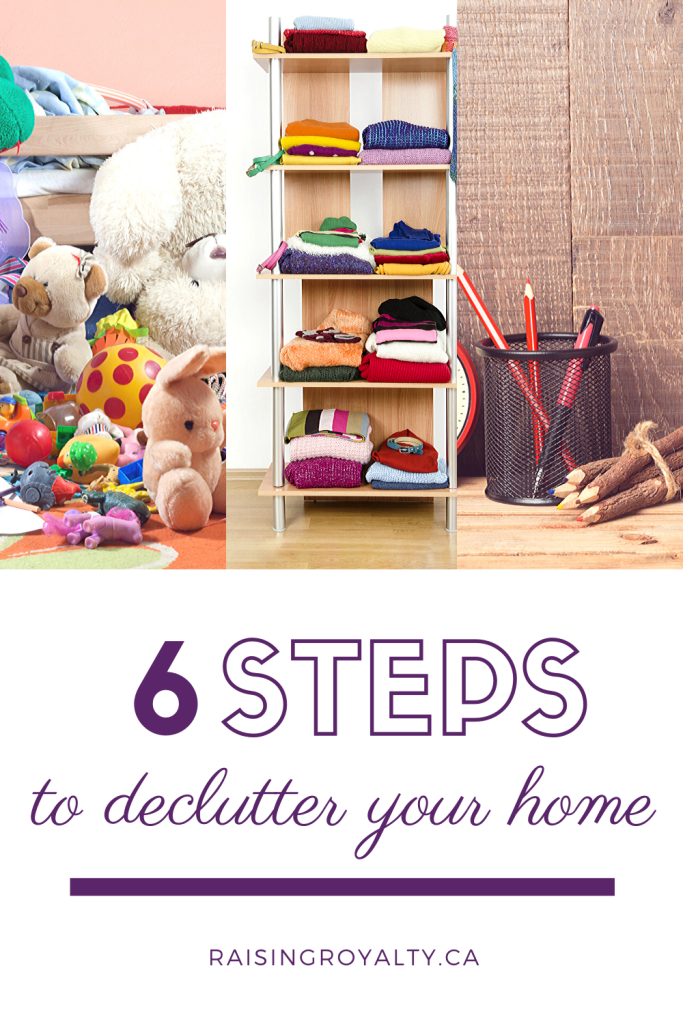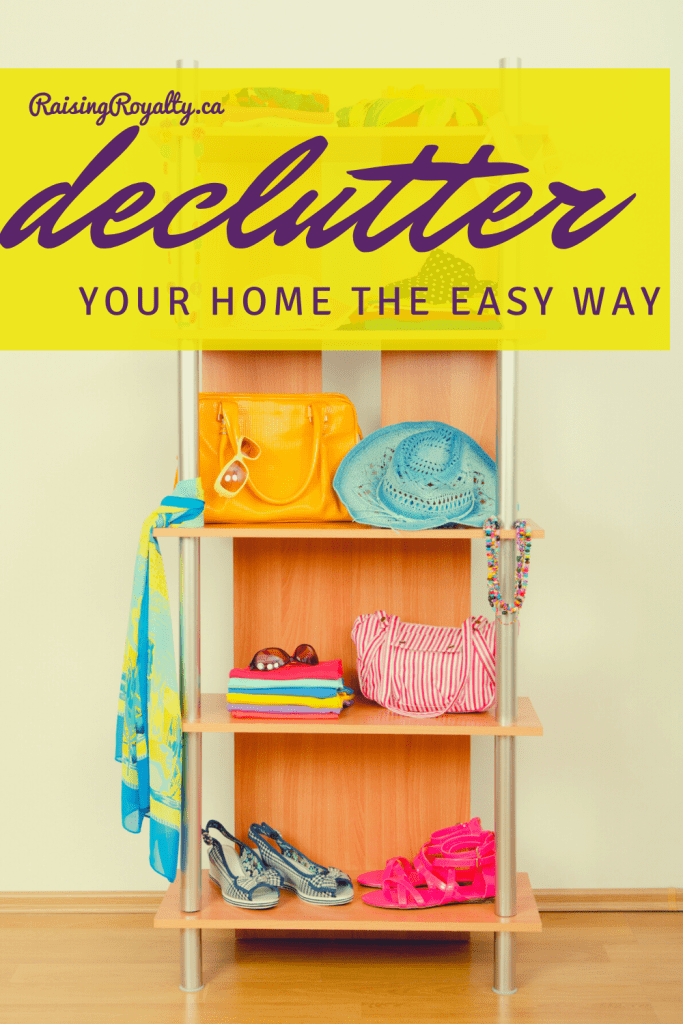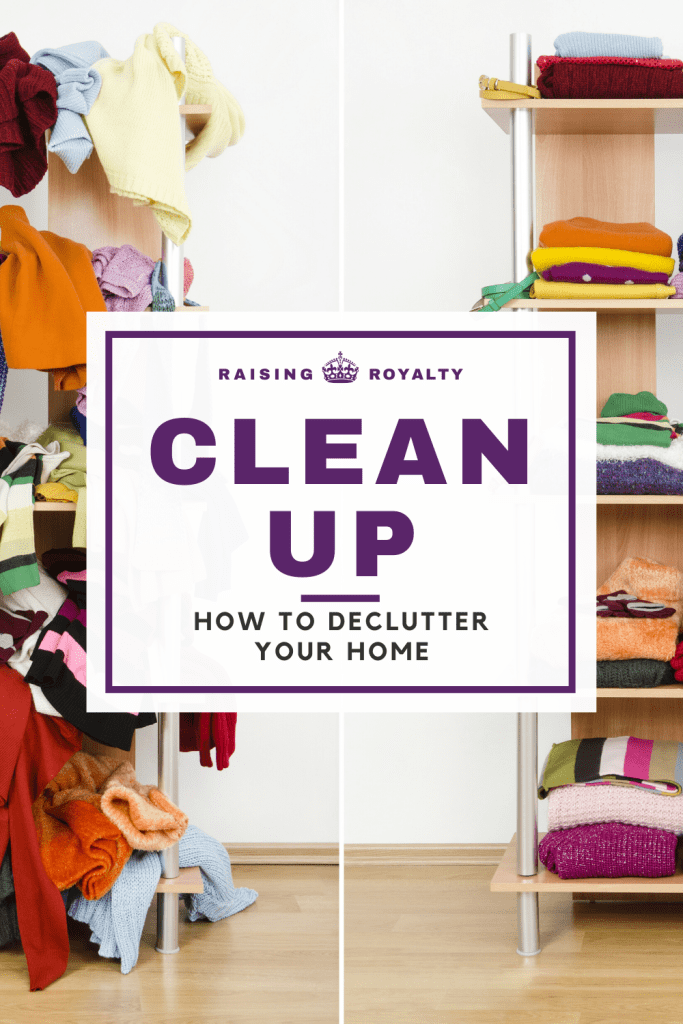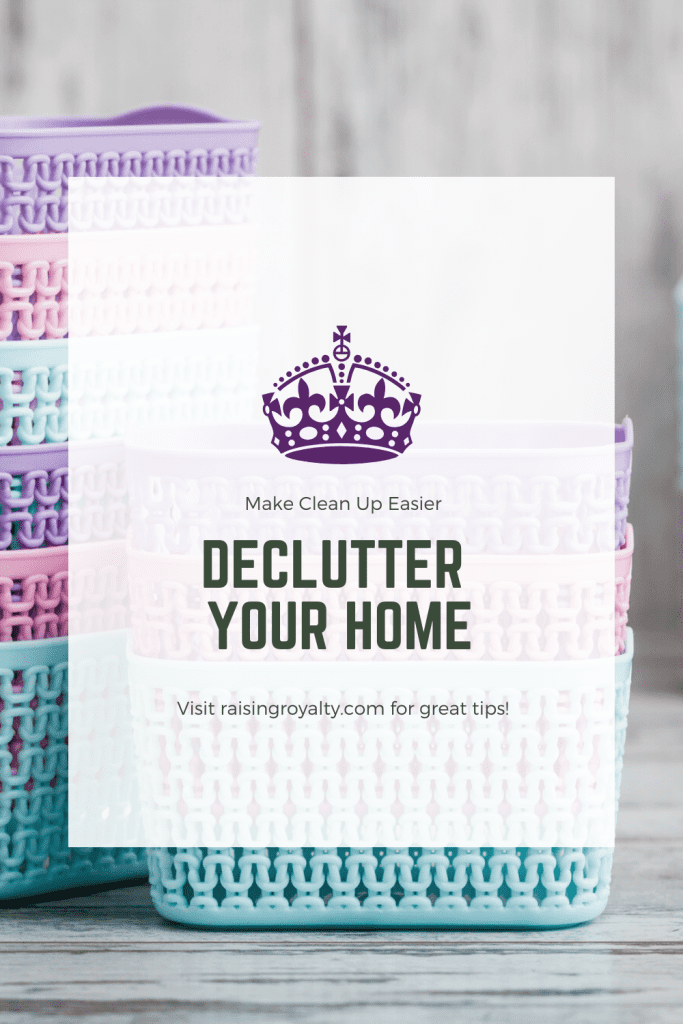

Don’t let clutter clog you up!
I dislike house cleaning and that means I procrastinate. Sometimes, however, house cleaning doesn’t happen because I have to clean up before I can clean house. Know what I mean? You have to know how to declutter your home!
When there’s so much stuff on the shelves, tables, and floors, it’s hard to wash, wipe or sweep up. And sometimes, the clutter will hide the dirt.
When you can’t see what needs to be cleaned because of clutter, cleaning will take a seat at the back of the bus. It’s hard sometimes to see the forest for the trees, as the old saying goes.
It means that when all you see is “stuff”, you can’t see the bigger picture of a peaceful, lovely home.
Do you have too much stuff?
All that clutter, while it may be useful and meaningful, isn’t going to be used or mean anything when it’s in the way.
When you are tripping over the coats and shoes, because the closet is full of other things, there’s a problem.
When you can’t eat at your dining room table, because it’s covered with other things, you have a problem.
And when you avoid certain rooms of your home, because they’ve become collection points for other things, well.. you really have a problem now.
Knowing how to declutter is a learned skill
I get it. We buy things because we think they will help bring peace, joy and loveliness to our home. But even that cleaning equipment, when left out to get in the way, doesn’t help make your house a home.
All that stuff just weighs on the mind. When you enter a cluttered room, you feel more tired. Too much stuff causes stress. Let’s start our new year without extra stress, and take care of the things in the way. Here’s how to declutter your home!


Find the stuff a home
Yes it’s in your home, but does it have a home? My grandmother often repeated the old cliche, “A place for everything, and everything in it’s place.” The old saying still rings true. When there’s a place for everything, and everything goes in it’s place, you don’t have a problem with clutter.
So find your stuff a home. Use labels (masking tape and a pen works too!) if you need to remind yourself where you want something to go.
Get some more hangers, so you can hang up the coats, out of season clothes, and specialty items that you need once or twice a year.
Make space on the shelf to display those books or souvenirs, so you can actually enjoy them.
Don’t hang on to stuff
If you can’t find a place for it, you have to ask the question, “Do I need this?” I’m totally guilty of this. I hang on to things I’m not using, in case I might need it someday.
Do you know what usually happens? Someday arrives, and I need it, and I can’t find it buried in all my stuff. So I buy another one. And hang on to it in case I need it again .. someday.
The rule for stuff in your home should be Use it or Lose it.
There are very few items that you should be storing from year to year. Here’s my guideline for whether or not I keep items:
- have I used it in the last 3 months, or will I use in the next 3 months?
- how hard would this be to replace?
- and do I have a lot of sentimental value attached to it?


How often do I use it?
Seasonal items get stored because you use them at least half the year. Things like pool toys, BBQ tools, beach umbrellas and lawn mowers should be stored in the winter, for use the next year. They may not be used every day of the year, but they are used frequently enough, that storing them is worth the space.
But if it’s a sweater that’s been hanging in your closet for the last 12 months, and you haven’t touched it once, then it’s one you can toss in the donation bag. Those extra lampshades you kept when you replaced the lights? You can get rid of them.
If you haven’t worn it, used it, or touched it in the last 3-6 months, do yourself a favor and get it out of your house.
Can I replace this easily?
There are some exceptions to the frequency of use guideline. Formal dress clothes may not be used even once a year, but when that wedding, funeral or awards banquet comes up, it’s expensive and inconvenient to replace the gown. Keep formal wear (as long as it fits) in a closet where it won’t get damaged.
However, that container of loose nails and screws you’ve collected over the years can be easily tossed. If you need a screw or bolt, they are easily purchased at a local hardware or discount store. And that goes for all those random office supplies too. Unless they have a home, you don’t need a container full of mixed up paperclips, thumbtacks, short pencils, eraser bits and the ends of tape rolls.
Why spend hours searching through a container full of bits and pieces, when a quick trip to the store and a few pennies will get you exactly what you need?
How much value do I place on this?
Some things we keep because we can’t bear to get rid of them. I have whole boxes full of colored pictures, crafts, writing samples and cards my kids have made over the years. I don’t get rid of them because they have a ton of sentimental value for me. There are archival tools I could use, to save space, but at this point I have the space, and these are important to me.
However, the to-do lists, scribbled post-it notes, phone numbers on backs of envelopes and the like I toss on a regular basis. Those have no meaning to me whatsoever, and just clutter up my pockets.
Pictures of my grandmothers I keep. Pictures of former neighbours from ten years ago that I no longer have any contact with? Not so much.
Determine how much sentimental value you attach to the item, and dispose of those with no meaning.
Set boundaries for the stuff
Now that you’ve figured out what you’re keeping and where you’re putting it, how do you keep it from spreading out all over again? Contain it.
When you use containers for similar items, you set a boundary around it. Containers make it easy to know where the home for the stuff is. And you can tell at a glance how much you have.
Use bookshelves for the books. Pretty trays can hold the figurines. Even a small placemat can help “contain” the candles, by providing a boundary for them.
Showcase the shells from your trip to the beach in a nice clear jar. Display your collection of stamps and postcards in a shadowbox. When you contain your stuff, you draw attention to it and can enjoy it even more.
Containers are useful even when they aren’t being seen.
We use a cardboard box to contain all the frozen juice cans in the freezer. A bin holds the cheese in the fridge. A basket can hold the washcloths, soaps or extra toothpastes under the sink.
You can organize all the cupboards, closets and drawers with containers.
Still have too much stuff?
So you’ve found places for everything, set boundaries and organized with containers, and you’ve even gone through things to get rid of some things, but you still have too much stuff? You’re going to have to get down and dirty ruthless.
Sometimes we’re too close to our stuff. It can be hard to see clearly when you’re busy going through a lot of things.
Maybe it’s the clothes that overflow in the closets. Maybe you have toys galore and you’re tired of tripping on the Lego. Or maybe it’s bulging cupboards and counters that never seem to have enough space.
You need some perspective.
Get help with the stuff!
Grab a friend and ask them to help you tackle one trouble spot at a time. Friends can help us really see our things in new lights. They can remind us of how easy it is to replace some things, or force us to truly justify why we’re keeping something.
Plus, it’s always easier to complete a big job, like organizing a too-full closet, when you have a friend to share the work.
Or try a new philosophy on your stuff.
Minimalism will help you drastically reduce your items. A capsule wardrobe gives you a great guide on keeping only what’s necessary.
And philosophies like feng shui or kon mari make sure that what stays in your home are only the things that let you breathe and relax.
If worse comes to worst, hire a professional.
There are organizing companies that will help you go through your items and downsize, organize and display only what matters or is used. They work with you on a one-to-one basis to help you deal with the stuff, once and for all.







